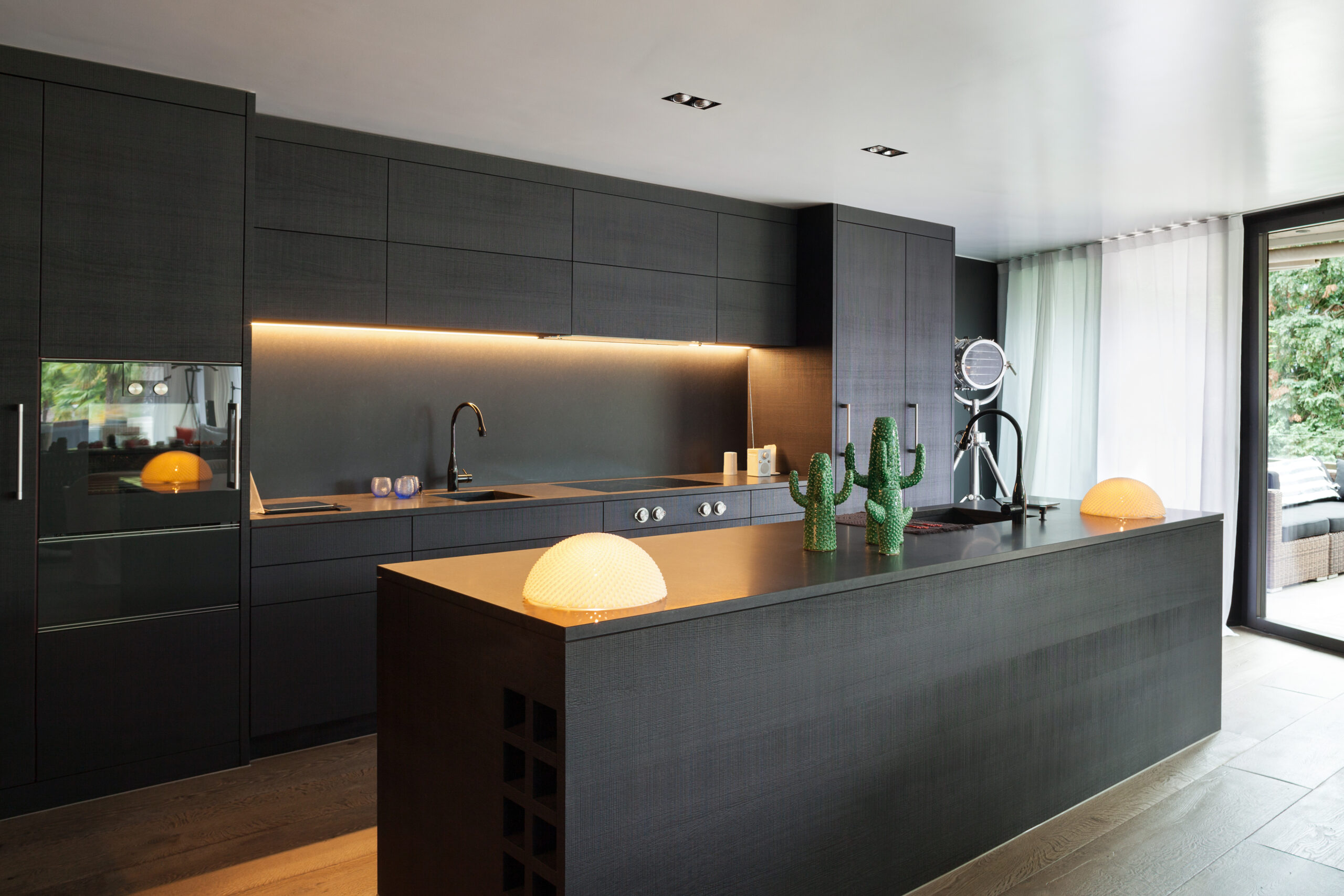Benefits of Floor-to-Ceiling Kitchen Cabinets: Floor To Ceiling Kitchen Cabinets

Floor-to-ceiling kitchen cabinets are a smart design choice that maximizes vertical space and offers numerous benefits for your kitchen. By utilizing the full height of your walls, you create a visually appealing and highly functional space that can accommodate all your culinary needs.
Storage Capacity and Kitchen Organization
Floor-to-ceiling cabinets significantly enhance storage capacity, allowing you to store more items while keeping your kitchen organized. This is particularly advantageous in smaller kitchens where space is limited. With increased storage, you can declutter countertops, making your kitchen appear more spacious and inviting. Imagine having a dedicated space for everything, from pots and pans to spices and appliances. This not only minimizes clutter but also saves you time searching for items, making your daily kitchen routine more efficient.
Installation and Maintenance

Installing floor-to-ceiling cabinets requires careful planning and execution, ensuring they’re securely mounted and function smoothly. This section delves into the installation process, highlighting crucial considerations for structural support, and provides guidance on selecting the right hardware and accessories. It also offers practical tips for maintaining and cleaning these cabinets to preserve their longevity and functionality.
Installation Process
The installation process involves several steps, beginning with preparation and ending with final adjustments. It’s crucial to ensure proper structural support, as these cabinets are heavy and require secure mounting.
- Preparation: Before starting the installation, carefully measure the space where the cabinets will be installed, ensuring the walls are plumb and level. It’s also essential to check for any existing electrical outlets or plumbing lines that might need to be relocated or adjusted.
- Framing: Installing floor-to-ceiling cabinets often requires additional framing to support their weight. This typically involves adding studs to the existing wall framing, ensuring they are strong enough to handle the load. The number and placement of these studs depend on the cabinet size and weight.
- Cabinet Installation: Once the framing is complete, the cabinets are installed. This involves securing them to the wall using screws or other appropriate fasteners. It’s crucial to ensure the cabinets are level and plumb to avoid any issues with doors or drawers opening and closing properly.
- Finishing Touches: After the cabinets are installed, the finishing touches involve installing the doors, drawers, and hardware. This includes attaching hinges, drawer slides, and any decorative trim or molding. It’s also essential to ensure the doors and drawers open and close smoothly and that the hardware is securely installed.
Hardware and Accessories, Floor to ceiling kitchen cabinets
Choosing the right hardware and accessories can significantly enhance the functionality and aesthetics of floor-to-ceiling cabinets. Here’s a guide to selecting the appropriate options:
- Hinges: For smooth and reliable door operation, select high-quality hinges that are durable and resistant to wear and tear. Soft-close hinges are an excellent option, as they provide a gentle and quiet closing action.
- Drawer Slides: Choose drawer slides that are rated for the weight of the drawers. Full-extension slides offer the most functionality, allowing for easy access to the entire drawer content. Consider soft-close slides for smooth and quiet operation.
- Pulls and Knobs: Select pulls and knobs that complement the cabinet style and overall kitchen design. Consider the size and shape of the pulls and knobs, ensuring they are comfortable to grip and use.
- Storage Solutions: Floor-to-ceiling cabinets offer ample storage space, so consider incorporating various storage solutions to maximize their functionality. These can include pull-out shelves, lazy susans, spice racks, and other organizers that help keep items organized and easily accessible.
Maintenance and Cleaning
Maintaining and cleaning floor-to-ceiling cabinets is crucial to preserve their functionality and appearance.
- Regular Cleaning: Dust the cabinets regularly with a soft cloth or microfiber duster. Avoid using harsh chemicals or abrasive cleaners, as these can damage the cabinet finish.
- Cleaning Spills: Clean spills promptly using a damp cloth and mild dish soap. Avoid using harsh cleaners or abrasive sponges, as these can scratch the surface.
- Door and Drawer Maintenance: Regularly check the hinges and drawer slides for any signs of wear or damage. Lubricate them with a light oil or spray to ensure smooth operation. Ensure the doors and drawers open and close smoothly and that the hardware is securely installed.
- Preventative Measures: Avoid overloading the cabinets, as this can strain the hinges and drawer slides. Also, ensure that the doors and drawers are closed properly to prevent damage.
Floor to ceiling kitchen cabinets – Floor-to-ceiling kitchen cabinets are a great way to maximize storage space, but they can be a bit tricky to access. That’s where cabinet sliding door tracks and rollers come in handy! They allow you to easily glide open and shut those high cabinets, making it a breeze to grab your favorite spices or that extra set of dishes.
So, if you’re thinking about installing floor-to-ceiling cabinets, don’t forget to consider the importance of smooth-operating sliding doors.
Floor-to-ceiling kitchen cabinets are a great way to maximize storage space, but sometimes it can be a pain to reach things at the very top. One way to avoid this is by using a cabinet door trash can for your waste disposal.
This way, you can easily toss trash without having to climb up and down, and you’ll also free up valuable counter space for other things.
